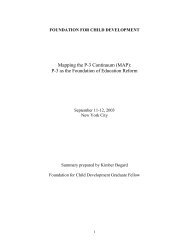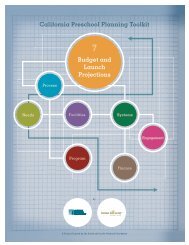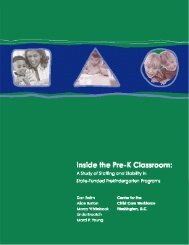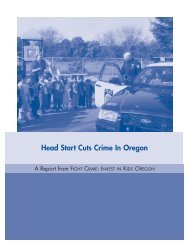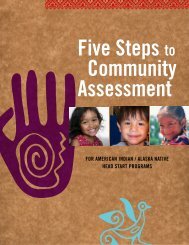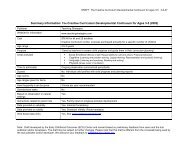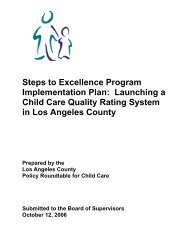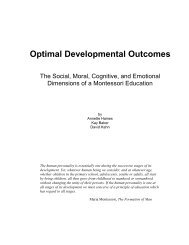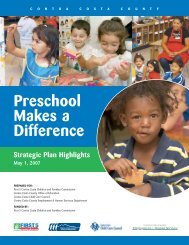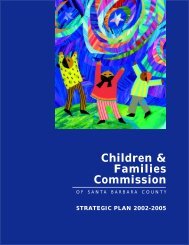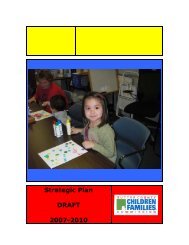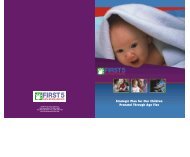Download this file - Plan4Preschool
Download this file - Plan4Preschool
Download this file - Plan4Preschool
Create successful ePaper yourself
Turn your PDF publications into a flip-book with our unique Google optimized e-Paper software.
API of 800 or more must maintain its API of at least 800. In addition, a school must<br />
meet or exceed growth targets for each numerically significant subgroup at the school.<br />
LEAs and schools in the Alternative Schools Accountability Model (ASAM) receive APIs<br />
but do not receive API targets.<br />
Since 1999, the growth target for subgroups has been 80 percent of the schoolwide<br />
growth target. However, growth targets for numerically significant subgroups will change<br />
beginning with the 2006-07 API reporting cycle and will be parallel to the schoolwide<br />
target calculation that has been in place since 1999. Specifically, starting with the 2006<br />
API Base Report, each numerically significant subgroup will have to show API growth of<br />
at least five percent of the difference between its 2006 API Base and 800. In addition, a<br />
minimum target of five points schoolwide and subgroup growth will also begin with the<br />
2006 API Base Report. Schools and subgroups with API scores at or above 800 must<br />
maintain an API score of at least 800.<br />
Subgroups<br />
A “numerically significant” subgroup is defined as at least 100 students with valid test<br />
scores or 50 or more students who represent at least 15 percent of the students with<br />
valid test scores. “Subgroups” include the following categories:<br />
• African American (not of Hispanic origin)<br />
• American Indian or Alaska Native<br />
• Asian<br />
• Filipino<br />
• Hispanic or Latino<br />
• Pacific Islander<br />
• White (not of Hispanic origin)<br />
• Socioeconomically disadvantaged<br />
• English learners<br />
• Students with disabilities<br />
API Ranks<br />
For the API Base Report, schools receive a Base API score, statewide ranking, similar<br />
schools ranking, and growth targets. For the rankings, a school’s API score is ranked as<br />
one of ten categories (deciles). A ranking in the first decile is the lowest rank, and a<br />
ranking in the tenth decile is the highest rank. The statewide ranking compares a<br />
school’s API with those of all other schools statewide of the same type (i.e., elementary,<br />
middle, or high schools). The similar schools ranking compares a school’s API with<br />
those of 100 other schools with similar demographic characteristics of the same type<br />
(i.e., elementary, middle, or high schools). LEAs, schools in the Alternative Schools<br />
Accountability Model (ASAM), and subgroups do not receive ranks.<br />
47



